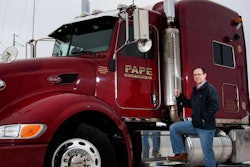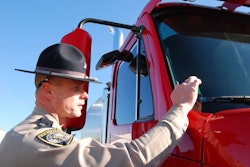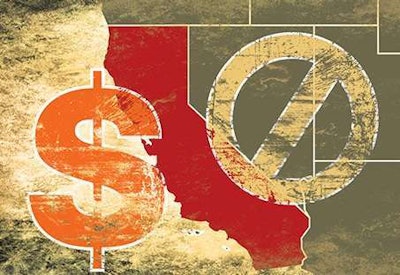 Click through the image to use our interactive graphic to determine your options for getting CARB-compliant under the Truck and Bus rule in 2014.
Click through the image to use our interactive graphic to determine your options for getting CARB-compliant under the Truck and Bus rule in 2014.Part 1 of this feature detailed the difficult yearend decision coming for owner-operators of trucks with 1996-2006 model year trucks; Part 2 elaborated on that difficulty with information on CARB’s current and potential future enforcement muscle.
In addition to the California Air Resources Board’s Statewide Truck and Bus Rule discussed in parts 1 and 2 of this series, other equipment responsibilities are included in the following rules pertaining to heavy-duty diesel truck operations.
 This Tobin Trucking van trailer shows the side skirts required of 53-foot van or reefer trailers to maintain compliance with California’s GHG rule. Other belly fairings, if on the approved equipment list, could satisfy the reg.
This Tobin Trucking van trailer shows the side skirts required of 53-foot van or reefer trailers to maintain compliance with California’s GHG rule. Other belly fairings, if on the approved equipment list, could satisfy the reg.GHG rule | Officially called the “Greenhouse Gas Emission Reduction Regulation,” this rule requires aerodynamic equipment on van/reefer trailers as well as use of low-rolling-resistance tires on tractors and trailers operating in California, dependent on model year of the equipment. Small fleet owner Joe Hammerslough views the GHG requirements as at least operating on cost-benefit principles – unlike the Truck and Bus Rule.
“Save 5 percent on your fuel bill, and in a year save $3,000,” he says, and you’ve in most cases paid for the device.
As of the first of the year, the rule required virtually all 53-foot van/reefer trailers (shorter trailers are exempt) operating within the state to be outfitted with SmartWay-approved skirts or other fairings and tractors and trailers to run SmartWay-approved low-rolling-resistance tires. There are phase-in options for fleets and exemptions for short-haul tractors and trailers operating within a 100-mile radius of a base terminal. Find more on the rule via this link to the CARB site.
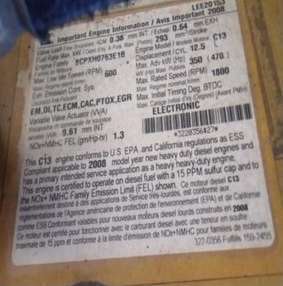
Reefer units | The “Transport Refrigeration Unit” regulation requires reefer units to meet newer ultra-low emissions standards seven years after their model year, essentially. At the end of 2013, 2006 model-year units come under the standard and must be tested and recertified or replaced to comply. Find more information about the rule here.
APUs | If you’re running a 2007 model-year or newer engine in your truck, your diesel-fired auxiliary power unit must have a diesel particulate filter of its own verified to Level 3 particulate control specs (85 percent efficiency) or have its exhaust plumbed into the truck’s exhaust system upstream of the truck’s DPF. This one doesn’t apply to APUs on trucks with 2006 and older engines — more via this page.
Read Overdrive‘s 2009 “Ports of Confusion” feature on the drayage rule and the origins of other CARB rules.
Drayage trucks | Dray haulers operating in California ports must meet the requirement to have all equipment operating under 2007 or newer emissions specifications by the first of the year – yet another reason the used-truck market on the West Coast is short on 2007 and later engines. “Used trucks with DPFs are becoming scarce, and prices are going up,” says ATBS’ Bill McClusky. To add insult to injury for local owner-operators in California, “after Jan. 1, certainly trucks without DPFs won’t be worth much there.” Find more detail on specifics of the drayage rules here.
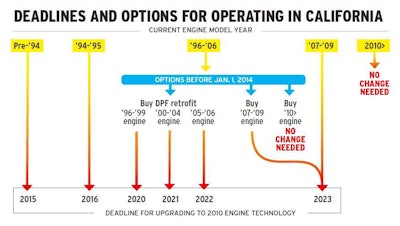 Click through the image to use our interactive graphic to determine your options for getting CARB-compliant under the Truck and Bus rule in 2014.
Click through the image to use our interactive graphic to determine your options for getting CARB-compliant under the Truck and Bus rule in 2014.

